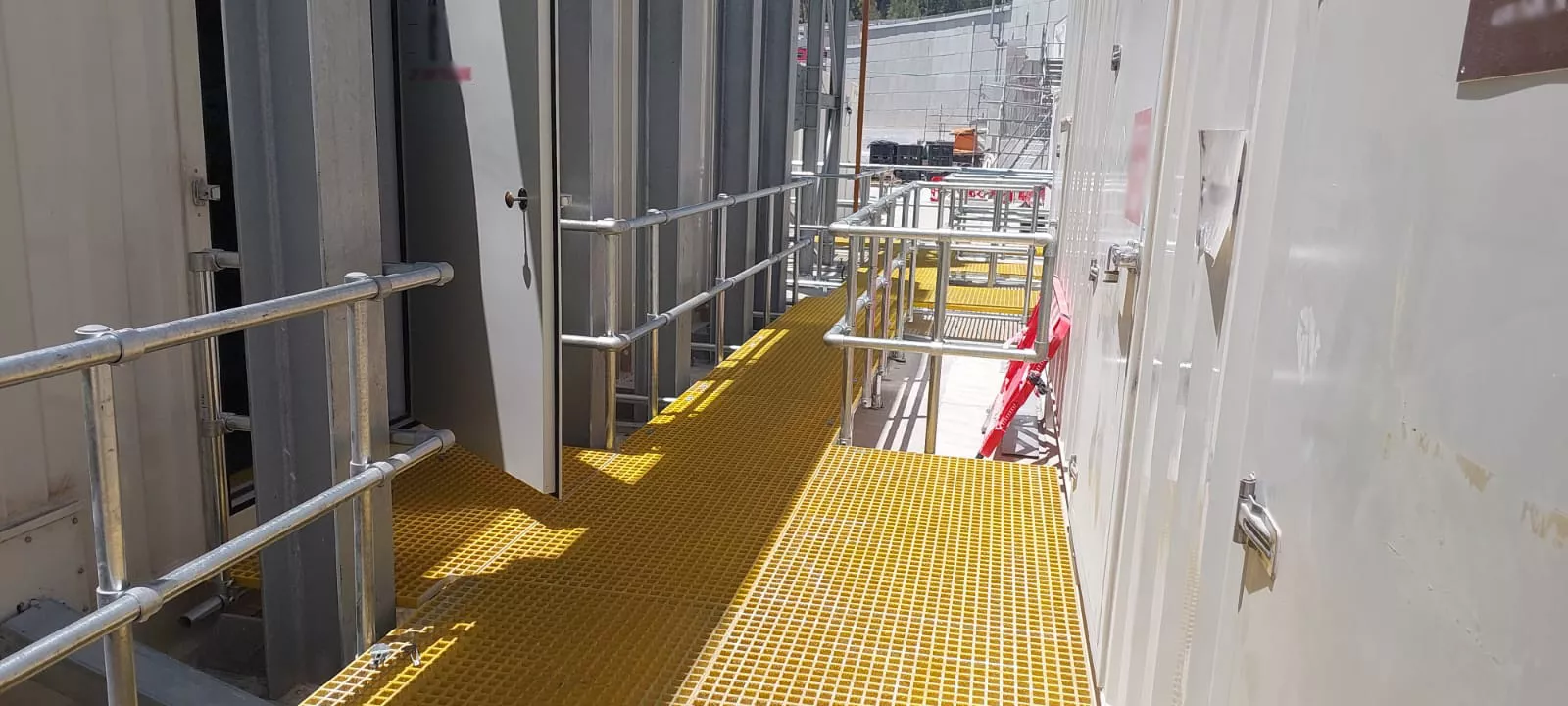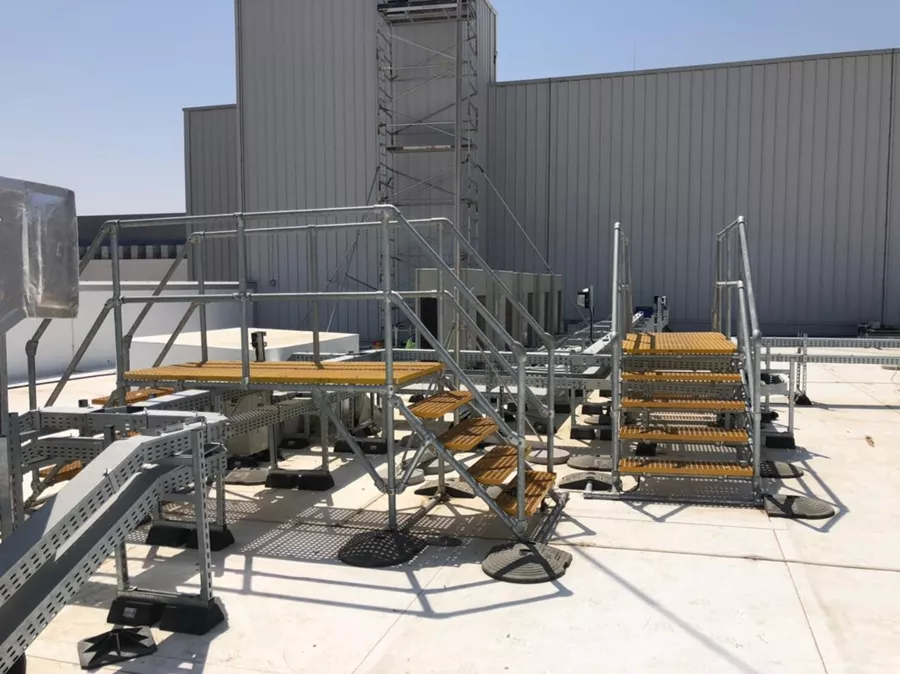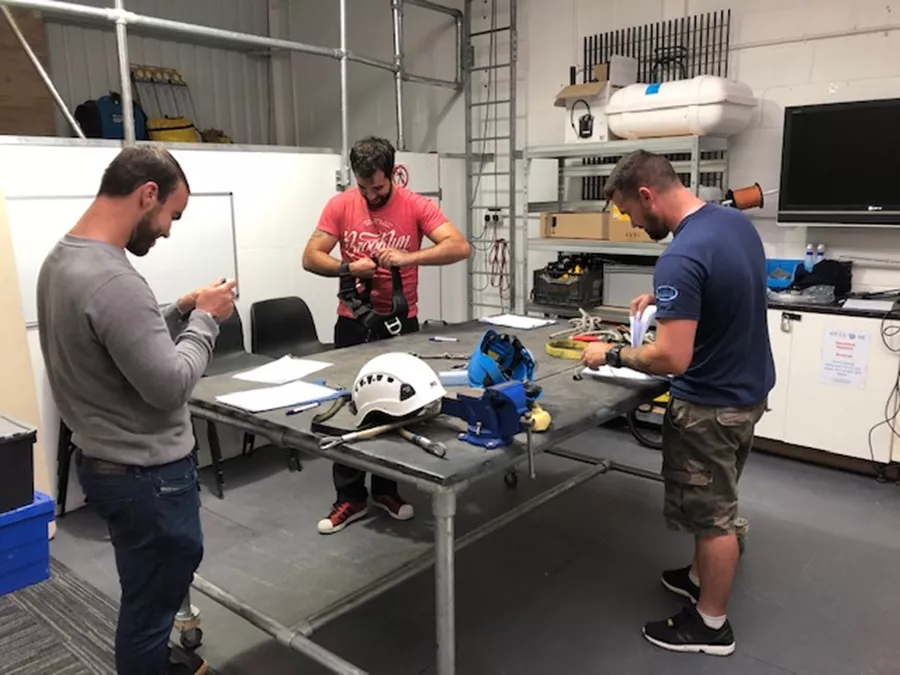
You are visiting the Canada Kee Safety website from United States. Would you like to go to the United States site?
The concept of “the cloud” to store an incalculable amount of computer data lifts our imaginations to the sky. We feel assured that our indispensable records are safe and sound “up there.” In reality, we know that the information is not floating in big, fluffy cumulus clouds. It is stored here on earth in mainframe computers housed in large data centres.
The computers need a vast amount of electrical power, and their environment must be temperature-controlled, low-humidity, and as free of contaminating dust as possible. This also requires considerable energy to run sophisticated heating, ventilation, and air-conditioning (HVAC) systems, typically situated on the roof.
Since any service interruption—including telecommunications— would be costly, the rooftop HVAC equipment should undergo frequent maintenance and inspections to help prevent downtime and minimize repairs. Just as the data centres safeguard digital files, their facility managers must ensure that workers performing these tasks have ample fall protection “up there.”

Entering or leaving the roof presents a binary danger, so every access point must be protected. Two common ways of egressing and ingressing are through roof hatches and fixed ladders.
Whatever type or style (e.g., standard, offset, double leaf), roof hatches should be surrounded by railings that have a self-closing gate to keep workers from falling back through the hatch.
For fixed ladders, the guardrails are set on both sides of where the ladder meets the roof. As with a roof hatch, a self-closing safety gate is at the point of access. Modular, pipe-fitted guardrails are installed without penetrating the roof and can be disassembled and reconfigured if the ladder access needs to be repositioned.

An unprotected roof edge is the most obvious danger, and a perimeter guardrail system is the best fall protection for a flat or low-slope data centre roof. That is because it is a “collective” system that protects multiple workers at once without the need for special equipment or training.
A roof safety railing system with counterbalancing PVC bases provides regulatory compliance and does not penetrate the roof membrane. This avoids moisture, dust, or debris leaking through to contaminate the sensitive computers and other equipment inside the data centre.

Besides HVAC equipment, data centre rooftops can be cluttered with cables, conduits, ductwork, skylights, and other trip hazards. A comprehensive fall protection plan should consider:

Employees often need to reach areas above their working height to service larger equipment. Ladders are an easy solution, but they present their own hazards. And given the frequency and extent of work needed, constantly using—and moving—a ladder is unproductive compared to having a work platform in place.
Modular work platforms combine the features and advantages of anti-slip steps and platforms with guardrails. Static work platforms are designed to be built in place to accommodate frequent use. Mobile work platforms, with heavy-duty locking casters, provide the flexibility of use from station to station. Since rooftop equipment on data centres can offer complex challenges, custom work platforms might be the best solution.

Where collective fall protection (e.g., guardrails) is impractical, workers must use Personal Fall Protection Equipment (PFPE). This is not as simple as donning the equipment and doing the job. Workers and supervisors need to be trained to inspect, wear, and use lifelines and other PFPE.
Technically speaking, data centres go back to the 1940s to house the earliest large computers. The 1990s saw virtually every office computerized, the growing use of home computers, the advent of the Internet, and the first widespread use of mobile phones. Data centres boomed.
Well into the 21st century, the need for data centres continues to expand.
Although there are comprehensive needs and requirements for developing and running a data centre, they can be in a renovated old building or built new. An old building can present unique rooftop fall protection challenges. A new building needs to have fall protection as part of the design. Either way, a hazard assessment will enable architects, engineers, contractors, and facility and safety managers to understand and implement compliant rooftop fall protection.

Data centres are critical infrastructures and any outage could cost a company millions of dollars. They require a variety of equipment, like ventilation and cooling systems, UPS, generators and cabling, to ensure continuous operation. As most of these systems will be situated on the roof, access will be required by engineers and contractors to carry out regular inspections, maintenance and emergency repair work. This means that safe access onto and across the roof is vital.